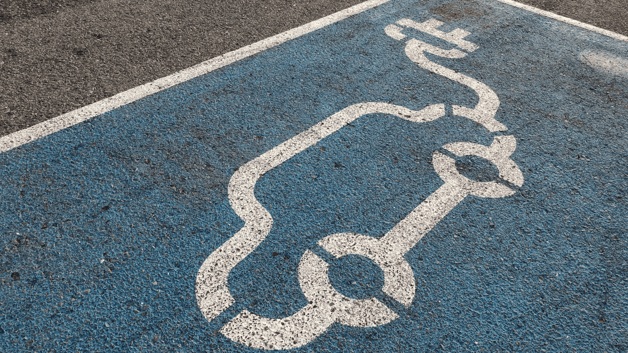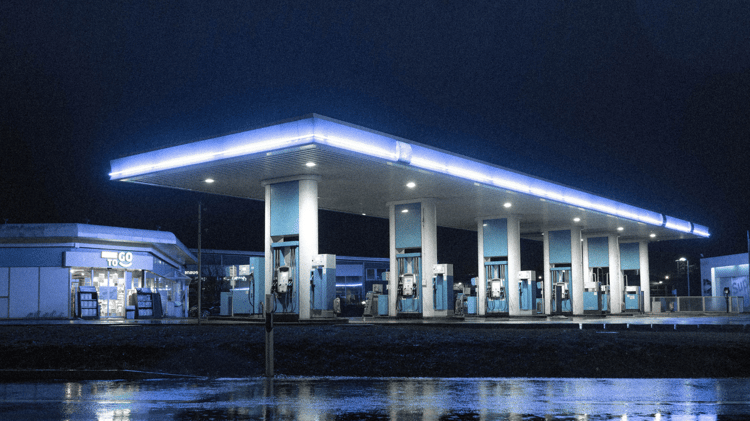
It is no secret that electric mobility adoption is booming: there are millions of electric vehicles (EVs) on the road today and by 2030, the number of electric cars, vans, trucks and buses on the world’s roads is predicted to increase to 145 million.
With this rise of electric mobility, consumer behaviour is changing as well—more drivers are refilling their electric ‘tanks’ at home and at work. Additionally, growing demand for EVs could erase the need for up to 2 million barrels of oil a day.
This trend presents a significant challenge for fuel retailers worldwide. According to a Boston Consulting Group study, without significant changes to their business models, at least a quarter of service stations worldwide are at risk of closure by 2035.
For fuel retailers, this turbulence could also present a unique opportunity to get ahead. With more electric vehicles on the road, the need for fast and reliable charging infrastructure is growing rapidly. As a result, the fuel retail sector is perfectly positioned to harness their existing locations to capitalise on this market shift.
This article highlights why forward thinking fuel retailers are tapping into EV charging to adapt to this market shift.

Petrol stations have always adapted to changing consumer behaviour
The modern service station evolved out of constant adaptation to the market and regulatory shifts. At first, every pump was manned due to fire hazards, fears of over self-fuelling, and the combination of fuel and shopping was a foreign concept. Then, as the rules were relaxed throughout the 1960s, the modern petrol station/small shop was born, and over time, services ranging from snacks to car washes were introduced.
However, over recent years fuel retail has come under increasing pressure. Low net profit margins on fuel and environmental concerns have bought the fuel retail sector’s main product into question. A recent prediction by McKinsey & Company showed that the demand for fuel retail will slowly decline across mature markets.
Yet, despite ‘new mobility’ being the cause of this slowdown, ironically it is electric mobility and the changes with which it will bring that present some of the greatest opportunities for modern service stations in the 21st century.

There will be many more EV drivers on the road in the coming years
While today, the shift from internal combustion engine (ICE) cars has been dominated by a handful of early adopters, in the coming decades, electric vehicles are set to become the ‘new norm’ in terms of transportation. Three sectors—private passenger vehicles, business fleets, and original equipment manufacturers (OEMS)—account for the vast majority of this growth.
Private passenger vehicles
Private passenger vehicles are the force that is driving the transition into electric mobility. According to a Bloomberg report, electric and other zero-emission vehicles could account for two thirds of new vehicle sales in developed markets by 2040.
One of the main technological developments which enables this growth is fast charging. Today many potential electric car drivers cite ‘range anxiety’ or the uncertainty of finding charging stations as the main barrier to opt for an EV.
However, with fast charging technology, consumers are now able to charge an EV battery in minutes as opposed to hours, and as a result, networks of fast charging stations are popping up across motorways and towns on both sides of the Atlantic. As a result, drivers' fears about not being able to charge are dissipating and we predict that this will only further accelerate the electric mobility transition.
Business fleets
Just as consumers are becoming more open to EVs, businesses and governments are ramping up the electrification of their fleets. Whether it's due to voter, consumer, or shareholder pressure, many organisations are turning towards electrification to meet climate pledges.
To name a few, IKEA, Amazon, UPS and Uber have all announced fleet electrification initiatives to proactively address the climate crisis and meet their emission targets. This trend will also accelerate electric mobility adoption in the mainstream population—creating second-hand opportunities, growing the technical support ecosystem, and increasing availability with lease companies.
Original equipment manufacturers (OEMs)
What’s more, OEMs are planning to release around 400 new electric vehicle models onto the market by 2025, demonstrating their commitment to ramping up EV production. What is significant here is that for many of these models, the price premium is expected to diminish sooner rather than later—bringing the mass adoption for EVs even closer.
Then comes the Tesla paradox. While OEMs have traditionally only produced the vehicle themselves, Tesla’s expanded Supercharger offering has caught fuel retailers off guard. As the company owns its own charging network, Tesla has the ability to own more of the transportation value chain. And Tesla is not alone, with other OEMs making moves to position their charging platforms as viable alternatives.
Fuel retailers therefore need to step up their game to avoid the risk of handing over their customers to OEMs entering the EV charging industry.

The need for a fast charging infrastructure has never been more urgent
As vehicles and driver behaviour changes, the need for reliable and accessible charging infrastructure has never been more urgent.
Adding to the pressure, governments are increasingly turning their attention to EV charging infrastructure. In three of the largest fuel retail markets in the world (UK, EU and US), governments are making large commitments to financing charging infrastructure. For instance:
- In the UK, Prime minister Boris Johnson has said the government will spend £1.3 billion on charging infrastructure to support the move to electric mobility.
- In the EU, a target of installing 3 million public charging points by 2030 has been set as part of the European Green Deal.
- In the US, the Biden administration has called for $7.5 billion worth of charging infrastructure as part of his historic $1 trillion Infrastructure Bill.
When action to reduce carbon emissions is combined with global shifts in consumer behaviour and the expansion of the electric mobility ecosystem, the extent of the change at hand becomes apparent. According to McKinsey & Company, the EV-charging value pool is predicted to grow to $20 billion (£15 billion) by 2030. For fuel retailers this provides a chance to get ahead and capitalise on rising consumer demand.

What DC charging stations means for fuel retailers
Fuel retailers are perfectly positioned—both in terms of on the road as well as on the market position—to capitalise on this shift towards electric mobility.
This is especially true with the introduction of high-power, DC fast charging stations to the market. Where EV drivers may be able to charge at home or work, these charging stations are likely to be far slower than DC fast charging (Level 3) stations. The rollout of these charging stations is likely to increase the pace of the electric mobility transition and therefore, presents a unique opportunity for fuel retailers to get ahead and gain more customers.
What’s more, according to our research, 36 percent of current EV drivers already charge their EVs at service stations and a further 21 percent would like to if the option was available.
Why petrol stations should and offer EV charging today
Modern fuel retailers are perfectly positioned to offer EV charging infrastructure today and maintain their dominant position in society.
The shift towards electric mobility gives rise to both new independent actors (Charging Point Operators or CPOs) and OEMs (like Tesla who not only own the vehicle, but the charging infrastructure as well) who are vying for a piece of the pie.
Alongside this, fuel retailers can also improve their sustainability reputations by offering a green alternative to emission-heavy fuel alternatives—nipping negative pressure from consumers and authorities alike in the bud before it arises.
By investing today, forward-thinking fuel retailers are consolidating their position in tomorrow's mobility ecosystem.
Learn what fast charging can mean for your businessRead our free ebook to get a complete overview of all fast EV charging possibilities, their differences, and what fuel retailers need to look out for. |
Related articles

How to increase petrol station sales with EV chargers
Today, many forward-thinking petrol stations are increasing sales, attracting affluent new customers, and creating a...

How modern petrol stations attract more customers with EV chargers
Despite its straightforward name, a petrol station usually offers a lot more than just a pump for drivers to fill up...

Why innovative petrol stations have EV chargers
It is no secret that electric mobility adoption is booming: there are millions of electric vehicles (EVs) on the road...
